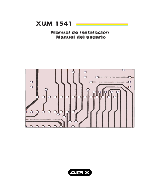
Live training courses are very interactive. WaterCAD Add-On Modules Enhance your productivity with specialized modules for calibration, optimized design, network simplification, and water security. Model calibrationDarwin Calibrator A calibrated model empowers you to make reliable decisions based on results that truly reflect your real world system.WaterCAD WaterGEMS StormCAD SewerCAD SewerGEMS. Leakage calibration for locating leaks and quantifying background water losses Bentley Water includes enhanced reports, queries, multi-.
Watercad V8I Calibration Software To Reinforce
Currently, leading multiple projects in Water & Wastewater Reuse with Bluestream.He has proficiency in the areas of Preliminary Planning, Feasibility Study, DPR preparation, designing, hydraulic modelling, financial modelling, EPC/PPP based tender document, bid process management and post-bid assistance, Operation & Maintenance, Flow Analysis, Leak Detection, Water Audit, Tendering, Contracts Management, Project Management and Business Development in Urban and Rural Water, Wastewater and Reuse Infrastructure.He can produce and advance high-performance engineering teams of water enthusiasts who take measured risks and blow away all expectations. He also enjoys helping the utilities to advance their water utilities and assets infrastructure with powerful engineering solutions, custom-built to understand and tackle their unique challenges. He has offered consultation to some of the Largest Water Utilities like PCMC, Aurangabad Municipal Corporation, Mahagenco, KUIDFC, ASCDCL, PMRDA etcHe has trained 450+ professionals, engineers, government officials, professors & students in Bentley’s OpenFlow Products software’s. Importing elevation data from digital elevation models Students will become familiar with WaterCAD and use the software to reinforce concepts with case studies.
WaterCAD is software produced by Haestad Methods.As part of a review of the Suva-Nausori master plan, an Australian consulting firm produceda hydraulic model of this network. 4A Training Schedule for PWD WaterCAD Course 5In September of 2000 a request was made to the SOPAC Water Resources Unit to perform aweek long training course on the hydraulic modelling software WaterCAD by the Fiji PublicWorks Department (PWD). Workshop onHydraulic Network Modelling with WaterCADOctober 2000 SOPAC Miscellaneous Report 395RECOMMENDATION ARISING FROM THE WATERCAD TRAINING COURSE. Minimum Night Flow Analysis and Calibration Process (Epanet Calibrator Software).


Practice calculating and displaying model results using file Paula-PWDIExample2. Do tutorial on reporting model results.10. Do tutorial on calculating model results.9.
Are the system pressures and flows still reasonable?Day 315. Wed, change the flow pattern from residential toquarry demand using the global edit function in the tabular reports for junctionsUsing the demand pattern in the Water Distribution section of the notes, create ademand pattern for the rural example you created and analyse it for the extendedperiod option. Extended period simulation- flow patternsUsing file Paula-PWDIExample2. Do the tutorial on patterns14. Building blocks of a hydraulic model (where to find what types of data): user demand data elevation/topography pipe network layout13. Simple design example- rural water supply system (Design Example 1 from notes) Does the total demand from the vii/age exceed the minimum flow from the sourceSpring? Are the pressures in your system reasonable? Are your pipe sizes reasonable? How do they compare with the hand worked solution?12.
Do the database tutorial.19. For the simple urban system you've just worked on, apply demand and roughnesscalibration factorsHow does this affect your previous design? Are you taking into account leakage and the daily peaking factor?18. Calibration of a hydraulic model:Data required for calibration Does it simulate real events17.
Using the control function for pumps and valves21. Dxf background (Suva.dxf)Day 420. Wcd and Turangi-Wo_elev.wcd) and Suva layers for creating a. Make sure you save the database connection you've created.Use the pipe length and diameter data in excel to estimate the cost of the system.Maplnfo (GIS)~ DTM of Rarotonga for importing elevation data (Turangi-with_elev. Dxf backgrounds (Paula-PWDIRaro Cadastral PE Sample.dwg and~ see handout on Creating Database Connections Between Maplnfo and Cybernet Excel (spreadsheet)~ Create a database connection with Excel exporting pipe length and diameter data fromthe pipe table and importing elevation data for the junction table using the simple urbansystem you've created.
Things to remember when creating a model for a large-scale network.28. Using the information provided for the Cook Islands- (pressure, flow and demand data)Calibrate the model in Turangi-with_elev.wcd27. Investigate the different scenarios in the file Example2.wcd26. Create scenarios for 10 and 20 years in the future using the simple urban system you'vecreated based on the given population growth rate25. Running model scenarios:24. Do the scenarios tutorial23.
Course review.Appendix B:Background Notes on HydraulicsBackground Theory for Hydraulic ModellingA model is something that represents something in the real world. Uses of hydraulic modelling/ interpreting results: Identifying low pressure areas Design/effect of upgrades Leakage estimates Operation and maintenance Functioning of the network for different scenarios For presenting data31. Suva based on Suva.dxf- try importing elevations from Maplnfo Lautoka based on Lau.dxfDo fire flow tutorial Do water quality tutorial and experiment with Example1.wcd30.
Must be carefully defined before being inputinto the model. Appropriate values forfriction loss, pump performance, demand, etc. Thepredictions of pressure and flow rates that the model produces are only as accurate as theassumptions or data used to formulate the equations in the model. Modelling of waterdistribution systems can allow you to determine system pressures and flow rates under avariety of different conditions without having to go out and physically monitor your system.Cybernet or WaterCAD will help you to do the following: Perform steady state, extended period and water quality simulations Size pipes and pumps Analyse for demands that vary over time Model tank, pump and valve behaviour Track chemical constituents in the water Make estimates of leakage from the network Planning upgrades to the networkIt is important to remember the following when modelling:A model is only as good as the information you put into it!Basically, if the data you input into the model is crap your results will be crap.
Newton's second law of motion (F=ma)The first two laws appear in many different forms, depending on how the symbols aredefined, the importance of terms, the mathematical language used, etc. There are 3 basic laws to fluid flow:1.


 0 kommentar(er)
0 kommentar(er)
